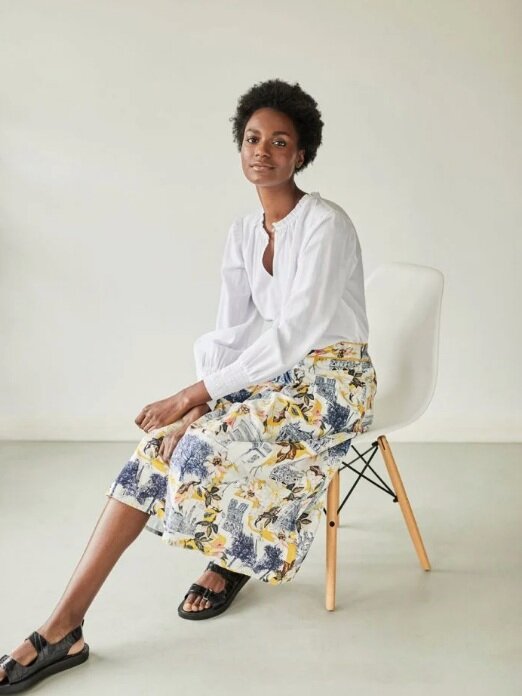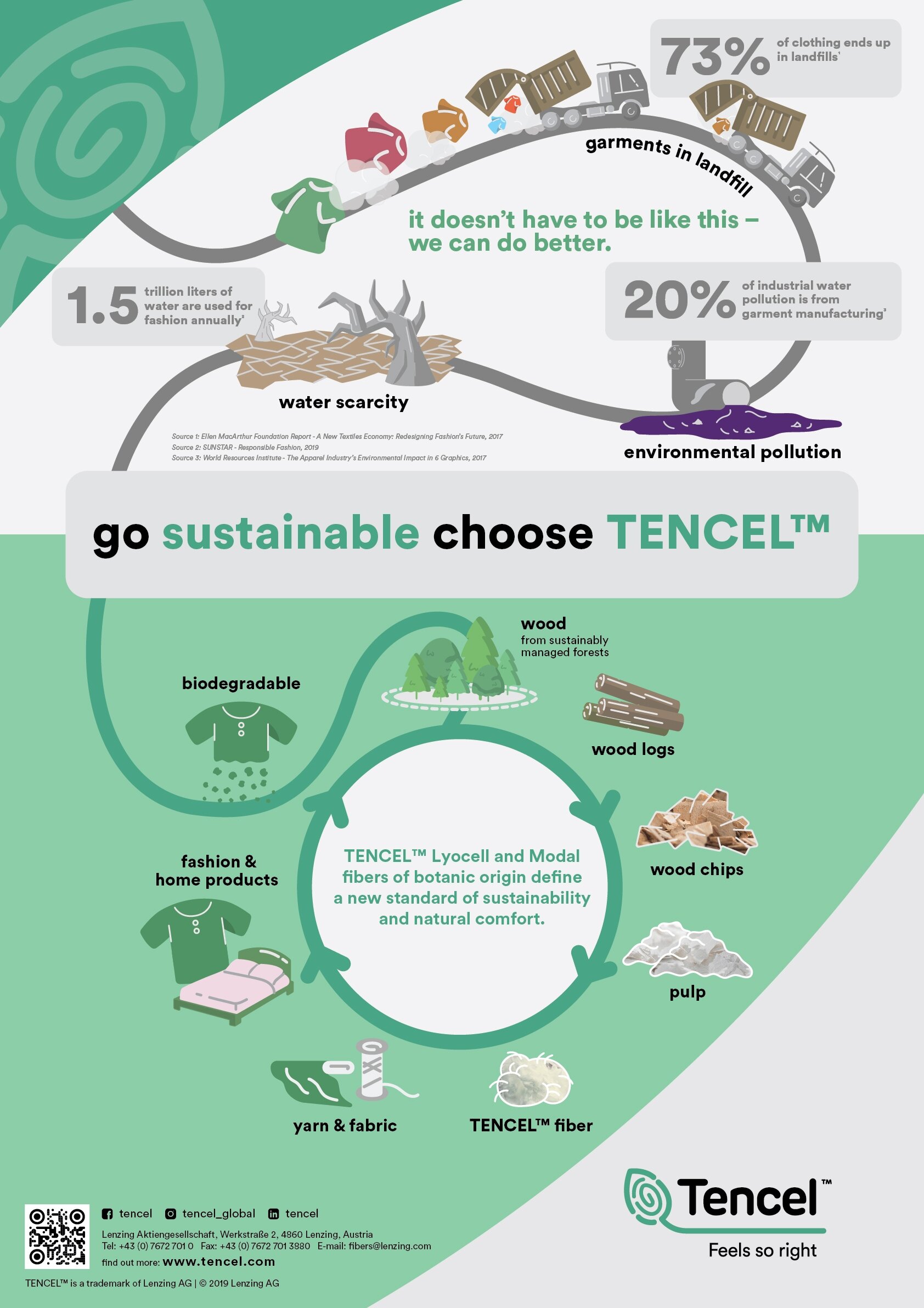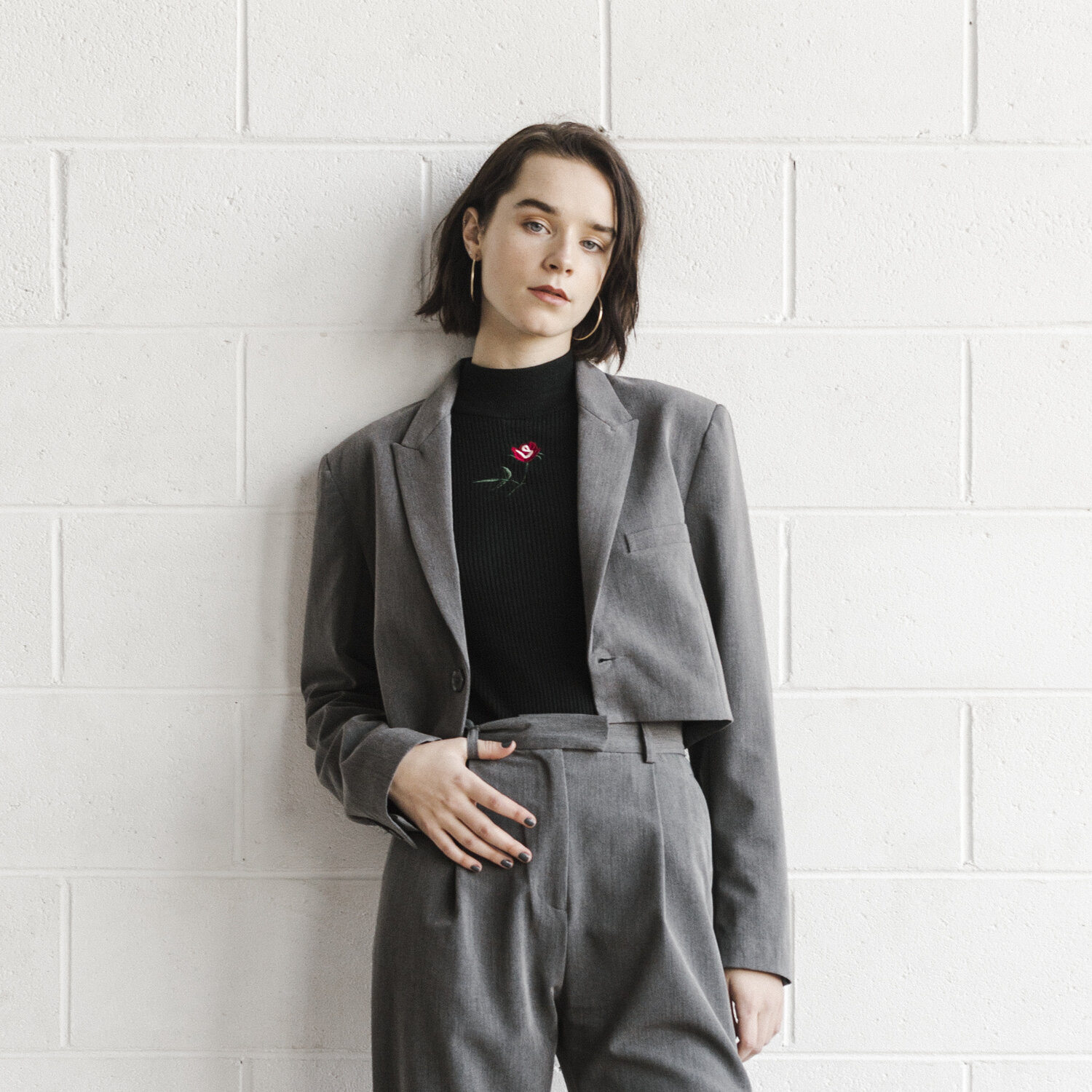What is Tencel? (& Where to Find It)
image from Thought
What is Tencel and What Brands Use It
Tencel is a versatile material that can be used in place of other, less sustainable textiles. But what is it actually made of, and what makes it more environmentally friendly? Oh, and where can we shop for it ethically?
How Can Tencel Be Used?
Tencel is an adaptable textile, and can be used across a wide range of applications in fashion. It can be made to look silky, hanging with a beautiful drape. It can be knitted into a fine material that sits close to the skin, wicking moisture from the body and even supporting thermal regulation. This makes it perfect for keeping you both warm and cool when you need it most. For this reason, it’s perfect for activewear, floaty high summer dresses and undergarments. When Tencel is made into a thicker yarn, it can be knitted into more chunky sweaters, scarves and other winter warmers. It’s a real all-rounder.
How is Tencel Made?
Tencel is a cellulosic fiber derived from wool pulp. That sounds complicated, and it is a little bit! Essentially, wood from trees is chipped into little pieces that are then cooked under high pressure alongside sodium hydroxide and sulfide liquor. This wood pulp is then dissolved in an amine oxide solution, turning the pulp into a sticky kind of liquid that is forced through a spinneret, to produce a fiber that can be woven into fabric, or spun into yarn. A spinneret is also what spiders produce their silky webs through, so imagine a man-made, machine version of that.
This process is how all Lyocell fabrics are made. Tencel is actually a brand name for a specific kind of lyocell. The differences between other lyocells and Tencel are extremely important to the material’s best sustainability credentials. Tencel also has created a modal fabric, which is similar but is made of a thinner yarn with a more delicate touch.
Tencel is produced from sustainably managed wood sources. Basically, this means that the Eucalyptus trees that Tencel is made of are not only fast-growing but grown specifically for the creation of the material or in areas that are not old and home to great levels of biodiverse life - forest-dwelling animals, fungi, mosses and so on. This is really important because, according to Canopy, over 150 million trees are logged each year for cellulosic fabric production, and this has resulted in less than a mere 20% of the world’s most ancient forests staying intact in tracts large enough to maintain biological diversity. Biodiversity is the basis of all healthy life on this planet, so this is a huge problem. Many brands and fabric producers don’t know, or don’t care where their wood pulp is sourced from, meaning that forests in Indonesia, Canada and even the Amazon Rainforest is logged for the sake of fashion. Tencel is far safer.
Another significant difference between any old Lyocell material and Tencel, is that Tencel is made in an award-winning closed-loop production process. This means that more than 99% of the solvent chemicals and water used in this complex production process are recovered, recycled and reused. This is great because it almost totally eliminates water contamination in areas surrounding production.
image from Tencel
What Makes Tencel Sustainable?
We now know that Tencel is the most sustainable kind of Lyocell fabric. In fact, data from the Sustainable Apparel Coalition’s Material Sustainability Index shows that the material has almost four and a half times less of an impact during production, when we consider global warming potential, chemistry, water usage, and other influences.
But how sustainable is Tencel in general, and compared to other materials? This same sustainability index, which offers the most reputable and reliable material production impact data we have right now, can tell us. Even ‘regular’ Lyocell fabric is shown to be less harmful and impactful to produce than silk, hemp, conventional cotton, wool, modal, viscose, rayon and even organic cotton! Talk about ranking well.
The reason for this strong ranking is that water usage is extremely low, especially compared to cotton, due to the recycling process Tencel uses. Far less greenhouse gas emissions are associated with the material’s production, compared to emissions in silk and wool supply chains.
Eutrophication is when pollution causes more nutrients to flow into waterways, ultimately depleting the water of oxygen and killing the plant and animal life within it. This is another hidden problem in the fashion industry. When fabrics are produced, too often some of the chemicals, and even the organic matter - like feces, dirt and grease cleaned off of wool - are released into waterways, harming them. Again, Tencel’s closed-loop production process saves the day here, ensuring that eutrophication is a very minimal problem.
The final reason Tencel is sustainable is the most simple. It’s biodegradable and compostable! If you have a t-shirt made of Tencel and you have worn it to death, you could put it in the ground, and it would break down into the soil without harming the planet. Now that’s a truly closed loop that aligns with nature.
The Cons of Tencel
The pros of Tencel are clear: it can be used in all sorts of intelligent and beautiful ways, while leaving a fairly light footprint on the planet we all need to survive and thrive. But what about the cons? Is there anything wrong with Tencel?
The first thing we need to consider, Tencel production still requires us to take from the Earth. We live on a finite planet - there aren’t never-ending amounts of trees, soil, water and other elements for us to take without consequence. This means that while Tencel is a far more sustainable material than most, the most environmentally conscious choice we, and the fashion industry, can make is to slow down. Buying lots of Tencel clothes will have more of an impact on the planet than buying less, buying mindfully, and caring for the clothes that we already have. Recycled materials, like recycled cotton, are also more sustainable for this reason.
Another element to consider, Tencel is often blended with other materials. When Tencel is a yarn, it can be woven into a fabric alongside other yarns. For example, Tencel could be combined with an elasticated yarn to bring extra stretch to a garment. Tencel could also be blended with a synthetic material like nylon.
The problem here, Tencel is then no longer biodegradable. Too, that synthetic-Tencel blend garment will now shed tiny pieces of micro-plastic when it’s washed, harming the ocean. Watch out for faster fashion brands using a small percentage of Tencel in their primarily synthetic materials and using the fabric name to green-wash the product into seeming more eco-friendly than it truly is!
Sustainable Brands Using Tencel
Lucky for us, there are lots of ethically made, sustainable brands that are using Tencel to make genuinely better clothing. Below, you’ll find some of these brands. If they’re listed, they’re treating their garment workers fairly, or far more fairly than most (there’s always room for improvement). They’re also consciously producing clothing that is more sustainable at a slower pace.
Kings of Indigo
This brand, rated ‘Great’ by Good On You and their ethical brand directory, has pants, shirts, jeans and dresses made of Tencel. The brand has both masculine and feminine styles. A lot of Kings of Indigo’s Tencel garments are 100% Tencel or blended with other compostable fabrics, ensuring that biodegradability and sustainability remains intact. The brand also publishes information about where their fabrics are milled and their garments are made - a win for transparency!
Thought
Thought is an ethically made brand that uses a whole range of naturally derived, more sustainable materials - Tencel included.
The brand uses Tencel in their beautiful, billowy print dresses, skirts and shirts.
In 2020, 9% of Thought’s collection was made of Tencel.
This is an exciting stat, as many brands offer a far smaller range of Tencel options.
Organic Basics
This brand, catering to both masculine and feminine people, has a selection of Tencel underwear, long johns, boxers, bralettes, dresses, t-shirts, jersey shorts, singlets, and tight turtlenecks to get comfortable in. With a wide selection of ethically made garments, there’s something for lots of people.
Some of these garments are 100% Tencel, but products like underwear need a small amount - about 5% - elastane in them to keep them up!
Amour Vert
This brand sells a lovely selection of garments made of Tencel, and fabrics that blend Tencel with other biodegradable, more sustainable fibers like organic cotton and linen.
With shirts, blouses, pants and even a recycled polyester lined, 100% Tencel twill blazer available, this is another ethically produced brand with gorgeous options.
ArmedAngels
Another fair fashion brand, ArmedAngels has a large selection of Tencel clothing.
The brand, which helpfully labels which of their garments are PETA certified as vegan, sells Tencel jumpsuits, dresses, cardigans, boxers, underwear, bralettes, pants and shirts.
Armed Angel has transparent labeling and lets you know when a Tencel product is made of a blend with another more eco-conscious material while you scroll.
Eileen Fisher
A seriously sustainability-driven brand, Eileen Fisher has a wide selection of dress designs, turtle necks, jumpsuits, shirts, pants and jackets made of Tencel, and Tencel blends.
The brand only blends Tencel with other biodegradable materials, to ensure garments have an end of life that doesn’t involve sitting in landfill for hundreds of years.
Emma Håkansson is the founder and director of Collective Fashion Justice which seeks to create a total ethics fashion system that prioritizes the life and wellbeing of non-human and human animals, as well as the planet, before profit and production. She has written countless articles on ethics, sustainability, and fashion, and has two books due out over the next two years.
image from Thought










